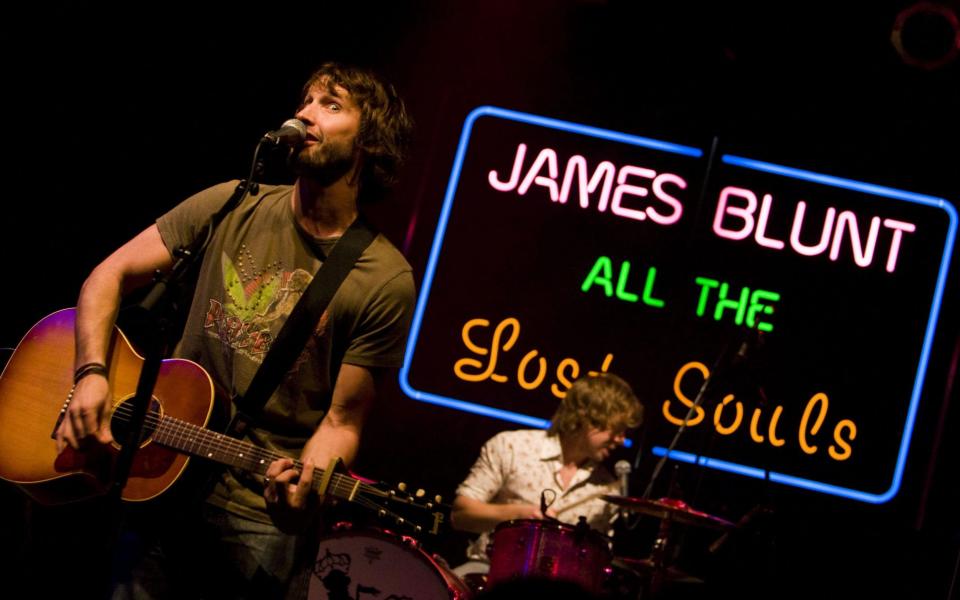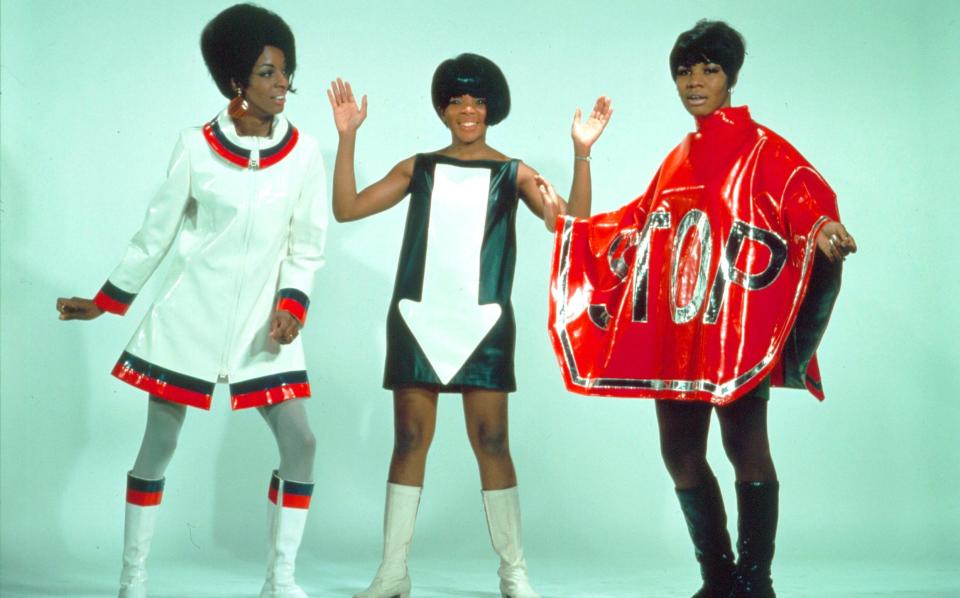Barry Manilow as a military weapon: a short history of sonic warfare

- Oops!Something went wrong.Please try again later.
- Oops!Something went wrong.Please try again later.
- Oops!Something went wrong.Please try again later.
From the no-man’s land that separates sparring countries to the interrogation cells of counter-terrorism prisons, music has always been used as a tool in psychological warfare. Detainees accused of crimes during the War on Terror talked of CIA operatives blasting the songs of foul-mouthed rapper Eminem into their cells at full volume for 24 hours a day in the hope that they’d crack. Meanwhile South Korean troops used to play sunny K-pop music over loudspeakers facing the Korean Demilitarised Zone in the hope of eclipsing the propaganda being broadcast by their enemies in North Korea.
This is not a melee into which you might expect Old Harrovian and Radio 2-friendly crooner James Blunt to step. But the 47-year-old singer has inserted himself into the latest high profile example of music being used as a psychological weapon, albeit in a tongue-in-cheek way. And it’s all to do with lockdown restrictions in New Zealand.
For days, crowds have been gathering outside the country’s parliament in capital Wellington to protest against Covid-19 restrictions. The parliament’s Speaker, Trevor Mallard, has tried all sorts of tactics to disperse the protesters, including turning on the water sprinklers on the lawn where they were camped. This didn’t work so Mallard turned on the music instead. Barry Manilow, to be precise.
Over the weekend, Mallard was hoping that blasts of Manilow’s saccharine hits, which include Mandy and Can’t Smile Without You, would send the crowds packing. Spotting a news story about the speaker’s novel approach, Blunt — always quick to ironically play up to his cheesy image as unpopular and cheesy — took to Twitter.
“Give me a shout if this doesn’t work,” Blunt tweeted, tagging the New Zealand police. Lo and behold, the sound system in Wellington was soon playing his 2005 mega-hit You’re Beautiful, a track that reached number four in the country’s charts. Rather than send the protestors home, footage emerged of them linking arms, waving flags and merrily singing along to Blunt’s cutesy hit.

It was in all likelihood a game move by Mallard’s team, showing that they have a sense of humour in the knowledge that the crowd had no plans to leave. And it was an easy PR win for the singer, garnering 100,000 ‘likes’ on the social media platform. But music has historically been a far more effective and serious weapon in psychological warfare than this episode suggests. It has rallied armies, crushed prisoners’ spirits and ended dictatorships.
The first instance in the UK of recorded music being used as wartime propaganda came in 1899, just a year after the first gramophone studio opened on London’s Maiden Lane. A hugely popular descriptive record called The Departure of the Troop Ship was recorded as a recruiting tool for the Second Boer War. The record featured staged crowds cheering at a quayside, bands playing, and tearful cries of “Don’t forget to write” as boots ascended the gang-plank. This was self-serving and positive propaganda. But it wasn’t long before music was turned on enemies or captives to devastating effect.
During the Second World War, prisoners in concentration camps would have their identities and certainties eroded by the constant playing of loud music alien to them. The theory behind this form of torture is simple: you can’t turn off your ears. This tactic was famously used in December 1989 when the US invaded Panama. The country’s military dictator, Manuel Noriega, took refuge in The Holy See’s embassy in Panama City but the compound was surrounded by US troops. Using a fleet of Humvees with loudspeakers mounted on them, the troops – under the command of US General Maxwell ‘Mad Max’ Thurman – blasted out Southern Command Network, the US military radio in Central America.
Things took a surreal turn when the station started taking requests: troops knew that the world’s media outlets were watching and so asked for songs with a clear message. Tracks requested included We’ve Gotta Get Out of this Place by The Animals, Wanted Dead or Alive by Bon Jovi, Panama by Van Halen and Nowhere to Run by Martha Reeves and the Vandellas. Opera fan Noriega surrendered days later. It is not known whether the station’s ironic spin of Rick Astley’s Never Gonna Give You Up proved to be the final straw.

According to the justice campaign group Reprieve, the playing of Western music at excruciating volumes was one of an arsenal of weapons used to extract confessions out of suspected terrorists following the 9/11 attacks on America. Five years ago the charity published the testimony of a former US detainee called Ahmed. He described in gruesome detail an alleged CIA dungeon known as the Dark Prison.
Methods of torture included being hung by the wrist from an iron shackle and being played “loud music”. Heavy metal band Metallica’s monster hit Enter Sandman was reported to have been played regularly at Guantanamo Bay, with one Iraqi prisoner grimly referring to the location at which it happened as “the disco”.
Sonic battery doesn’t always work. When David Koresh was holed up near Waco, Texas, with members of his Branch Davidian cult, authorities used aural bombardment to try to end the siege. They piped an endless stream of wailing bagpipes, speeding trains, buzzing drills, animal noises (such as rabbits screaming) and snippets of These Boots Are Made for Walkin’ by Nancy Sinatra into the air. They failed to end the stand-off, which resulted in the deaths of over 70 cult members.
And spare a thought for the police in Manchester. Just three and a half months after US troops successfully nabbed Noriega, they tried to “do a Panama” during the Strangeways prison riots in the spring of 1990. The police used big speakers to blast music by Rod Stewart and Julio Iglesias up at prisoners on the Strangeways roof. The authorities should have known better: 1990 was the height of the so-called Madchester music craze. Inmates on the roof responded to the easy listening assault in the only way they knew how – by raving along to the music.

